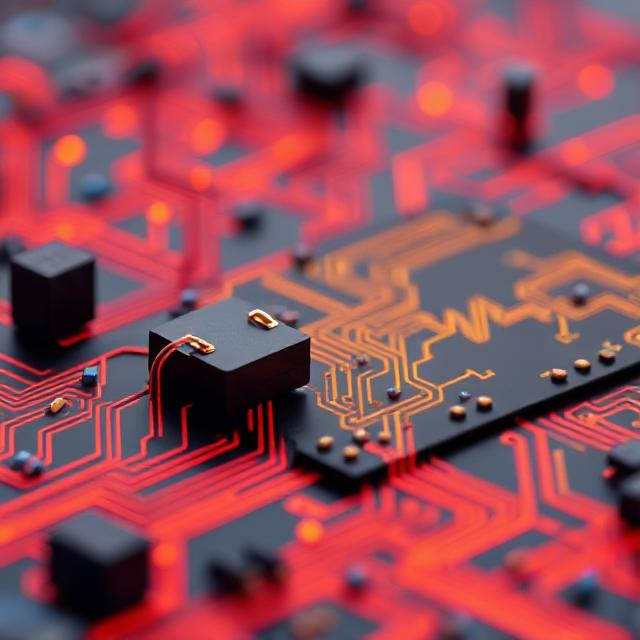Digital vs Analog Circuit Design – Easy Explanation
In the world of electronics, circuit design is a critical process that shapes the functioning of various devices, from everyday gadgets like mobile phones and computers to complex systems in industrial machinery. Understanding the distinction between analog and digital circuit design is essential, as both types play a vital role in modern technology. Let’s dive into the basics of these two types of circuits and how they differ.
1. What is Circuit Design?
Circuit design is the process of creating electronic circuits that perform specific tasks. These circuits are the backbone of all electronic devices. Depending on the type of signals they process, circuits are broadly categorized into analog and digital circuits.

-
Analog Circuit Design: This deals with continuous signals that can take any value within a given range.
-
Digital Circuit Design: This uses discrete signals, usually represented by binary values: 0 and 1.
Both types of circuit designs are crucial, with different applications and characteristics.
2. Analog Circuit Design
Analog circuits work with continuous signals, meaning they can take any value within a certain range. These signals often represent real-world quantities, such as sound, light, or temperature.
Examples of Analog Signals:
-
Sound (voice, music)
-
Temperature (sensor readings)
-
Light intensity (measuring brightness)
Key Features:
-
The signal in an analog circuit is smooth and variable, meaning it can represent infinite values between two points.
-
Analog circuits are often used for amplifying, filtering, or modulating signals.
-
However, analog circuits are sensitive to noise, meaning external disturbances can alter the signal.
-
Designing analog circuits requires careful consideration to ensure signal quality is maintained without distortion.
Common Analog Components:
-
Resistors: Control current flow.
-
Capacitors: Store electrical energy.
-
Inductors: Store energy in a magnetic field.
-
Transistors: Control current in a circuit.
-
Operational Amplifiers (Op-Amps): Used for signal amplification.
Where Analog Circuits are Used:
-
Audio amplifiers for boosting sound.
-
Radio receivers for tuning to different frequencies.
-
Sensors like temperature or light sensors that measure continuous variables.
3. Digital Circuit Design
Digital circuits work with discrete signals, typically in binary form, meaning the signals have only two levels: 0 and 1. These circuits handle information in the form of binary digits, making them ideal for processing data in modern electronics.
Examples of Digital Systems:
-
Computers
-
Calculators
-
Digital watches
Key Features:
-
The signal in a digital circuit is binary, either 0 or 1.
-
Digital circuits are easier to store, process, and transmit data because the signal is simple and well-defined.
-
These circuits are less affected by noise, making them more reliable for complex operations.
-
They are also capable of performing logic operations that are crucial in computing systems.
Common Digital Components:
-
Logic gates (AND, OR, NOT): Perform basic logical operations.
-
Flip-flops: Store binary data.
-
Counters: Count events or operations.
-
Microcontrollers and Processors: Control the operation of digital systems and process data.
Where Digital Circuits are Used:
-
Computers and smartphones, which rely on digital data processing.
-
Digital cameras for processing images.
-
Control systems in machines and automation.
4. Key Differences Between Analog and Digital Circuits
To understand how analog and digital circuits differ, here’s a quick comparison:
| Feature | Analog Circuit | Digital Circuit |
|---|---|---|
| Signal Type | Continuous | Discrete (0 or 1) |
| Noise Sensitivity | High | Low |
| Design Complexity | High (requires precision) | Easier (binary signals are simple) |
| Examples | Amplifiers, Radios | Computers, Microcontrollers |
| Data Handling | Harder to store/transfer | Easy to store and process |
| Power Usage | Generally lower for simple tasks | Can be high in complex systems |
5. Mixed-Signal Circuits
In the real world, we often need both analog and digital circuits in the same device. These are known as mixed-signal circuits. They combine both analog and digital components to handle tasks that require both continuous and discrete signals.
Example:
-
A smartphone uses analog circuits to capture sound from the microphone and digital circuits to process and store the audio data.
6. Conclusion
In conclusion, analog design deals with real-world signals and is highly suited for tasks where the signal needs to represent continuous variations, like sound or temperature. Digital design, on the other hand, uses binary signals and is ideal for tasks that involve computation, storage, and processing of data, like in computers and smartphones.
Both types of circuit designs are essential in modern electronics, and many devices use mixed-signal circuits to combine the benefits of both analog and digital circuits. Understanding their differences and applications can help us design better, more efficient electronic systems that power the technology we use every day.
Tags: (Op-Amps), Amplification, Analog circuit, analog signals, analog vs digital, Audio Amplifiers, binary signals, Calculators, capacitors, circuit design, circuit functionality, Computers, continuous signals, Continuous vs discrete, Control Systems, counters, data processing, Data storage, design complexity, Digital cameras, Digital Circuit, digital signals, Digital watches, Discrete signals, Electronic Components, electronics basics, Electronics comparison, filtering, flip-flops, inductors, light sensors, Logic Gates, Logic operations, microcontrollers, mixed-signal circuits, Modulation, Noise sensitivity, Operational Amplifiers, Power usage, Processors, radio receivers, real-world applications., Real-world signals, Resistors, Sensors, Signal distortion, Signal Processing, Signal Quality, smartphones, Temperature Sensors, transistors

